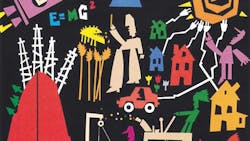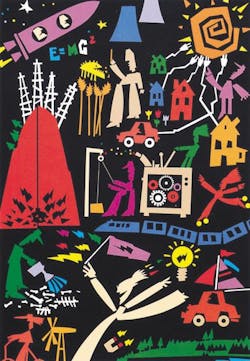I always find it interesting how people from outside an organized group expect characteristics of individuals within the group to conform to a stereotype. For example, when I played on and managed a men’s softball team, one of our team members was a pediatrician. I found it unusual that a pediatrician would play on a men’s softball team. My stereotypical perception of doctors would have their preferred recreation to be playing 18 holes of golf at a private country club every Wednesday with other doctors.
I suppose many people have formed stereotypical opinions of engineers. When I was in college, the stereotypical engineering student wore a calculator on his or her belt — yes, I knew a girl who did this. And in extreme cases, he (I never saw the girls do this) used a plastic pocket protector to hold a variety of writing and drawing utensils. Of course, many — maybe even the majority — did not fit this stereotype. But one characteristic I think the majority of engineering students shared was a keen interest in what makes things work.
This piece depicts a wide variety of engineering fields, such as rail transportation, space exploration, energy generation and transmission, and agriculture. However, one, and only one, equation appears in the illustration – it’s e = mc2. Have you ever used this equation in the course of your job? Of course, I can’t speak for all engineers, but I’ll bet less than 1% have ever actually applied this familiar formula.
So what formula would best represent the work done by engineers? My favorite is x = 1/2at2 + vt + x. Now, I realize this equation might seem too complicated to incorporate into artwork. So my second choice would be F = ma. This equation is even simpler than e = mc2 and has far more practical applications.
Of course, those in the electrical world would probably lobby for E = IR, which, again, has far greater application than e = mc2. While we’re at it, those involved in fluid power would likely vote for F = PA.
Considering all the different fields of engineering, it would be difficult to reach a consensus about a single representative equation. But I don’t know of any group that would promote e = mc2, except, of course, the proverbial rocket scientists. And most of them did wear calculators on their belts when they were in college.
About the Author
Alan Hitchcox Blog
Editor in Chief
Alan joined Hydraulics & Pneumatics in 1987 with experience as a technical magazine editor and in industrial sales. He graduated with a BS in engineering technology from Franklin University and has also worked as a mechanic and service coordinator. He has taken technical courses in fluid power and electronic and digital control at the Milwaukee School of Engineering and the University of Wisconsin and has served on numerous industry committees.

Leaders relevant to this article:

